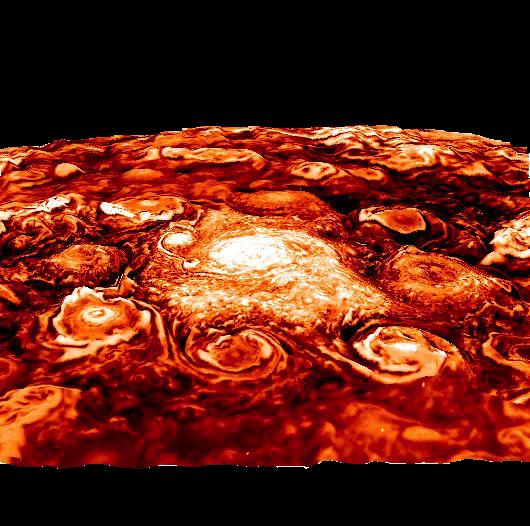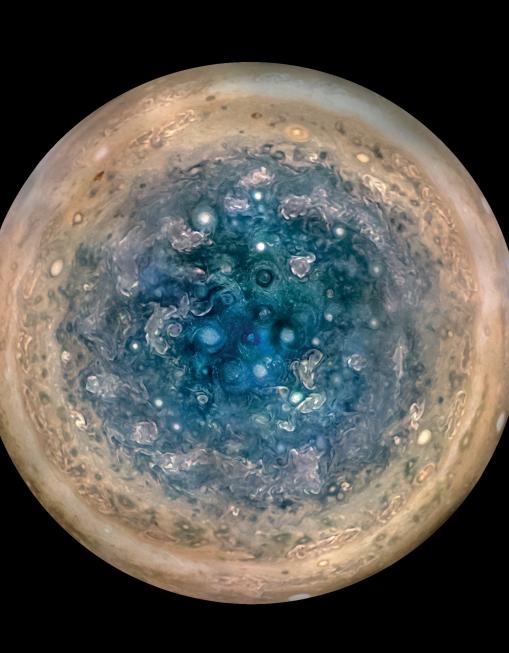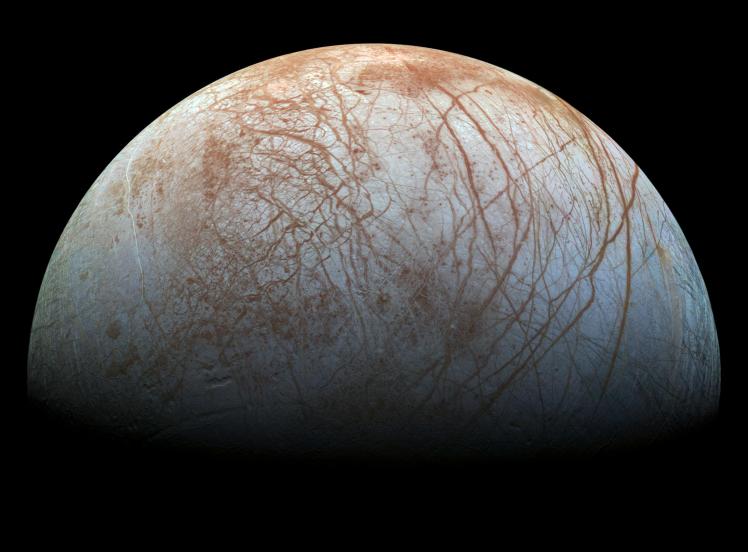
Back when I first started this blog, the opening post was about Pluto and the New Horizons probe that showed us incredible images of the heart-shaped ice sheet. This time we’re a bit nearer to home with the Juno mission circling Jupiter. Named after the Roman goddess Juno, she was married to Jupiter. According to myth, he hid himself behind clouds when he was getting up to things he shouldn’t have been and Juno looked through them, hence naming the probe that has been scanning the gas giant beneath its cloudy layers.
Juno reached Jupiter last year and has been orbiting the planet since. The reason I put a post together is mainly to share some of the incredible images that have been released by NASA. At both poles there are gigantic cyclones thousands of miles across, circled by multiple smaller cyclones, that last for seven months at a time and move up to 220mph.

Clearer images have also emerged of Jupiter’s most famous feature, the Great Red Spot. First seen in the 1660s, the storm is larger than the Earth and has been raging ever since – its momentum generated by two jet streams moving in opposite directions either side of it. However, it’s been predicted that it will actually dissipate in the next few decades.
New data has also recently surfaced from a previous Jupiter mission, Galileo, which ended its eight-year orbit of Jupiter by plunging into its depths back in 2003. In addition to Jupiter, it also gathered data on a huge plume of water erupting from its frozen moon Europa. At the time, scientists didn’t know what had caused the sudden fluctuations in data recorded, but research published in Nature Astronomy shows that it was caused by a 120 mile high geyser. Similar in size to Earth’s Moon but entirely encased in a frozen sea, the Europa Clipper probe will be launched in the 2020s specifically to assess whether there could be life on it.

It’s theorized that there could be thermal vents deep in the ocean, underneath the -220 degree C surface could generate a heat source. So, there might be the chance of microbes, but unfortunately the likelihood of giant squid floating around under the ice is pretty small. At least in the meantime we can continue to enjoy the extraordinary photos being beamed back from space.